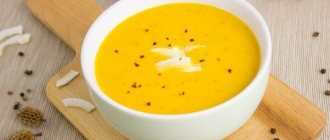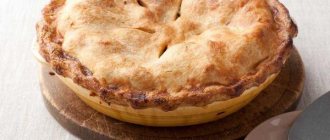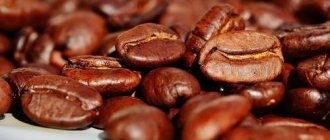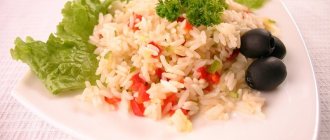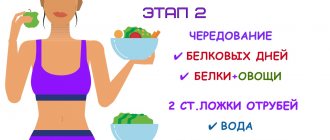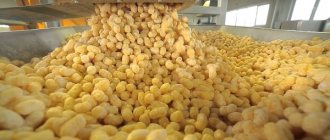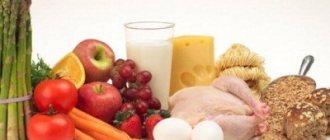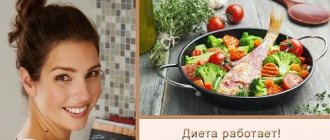General rules
First of all, let's find out what a therapeutic diet is.
Therapeutic nutrition, in medical terminology “medicinal table”, is prescribed for diseases and is an integral, and in some cases the main, component of treatment. Table No. 1, the Pevzner diet is prescribed for stomach diseases: acute and chronic gastritis , peptic ulcer . Table 1 is also prescribed for gastroduodenitis . Since this is a moderately gentle diet, it is indicated in the stage of recovery or mild exacerbation of the above diseases. It provides chemical, mechanical, as well as thermal sparing of the gastrointestinal tract with physiologically complete nutrition, since the daily diet contains 90-100 g of proteins, 100 g of fats and 420 g of carbohydrates. Calorie content - 2900-3000 kcal per day.
The main points of this diet are:
- Limiting secretion pathogens (broths) and irritants of the mucous membrane, which are spicy dishes and seasonings, raw vegetables.
- Elimination of difficult-to-digest foods and foods that linger in the stomach for a long time.
- The food is cooked and pureed. Baking without a pronounced crust is allowed. When the patient's condition improves, they switch to food without pureeing. In this regard, there are options - a wiped table and not a wiped one. If we are talking about fish and rough meats, then they can be served in pieces.
- Excessively cold and hot dishes are excluded. Cold food suppresses acid-forming functions, but slows down regenerative processes. Too hot also has an adverse effect on the mucous membrane.
- Salt is moderately limited.
- Meals are provided 5-6 times a day, including drinking milk or cream before bed.
Diet No. 1 for gastritis
In acute and exacerbation of chronic gastritis, it helps reduce inflammation and this is achieved by taking pureed and easily digestible food at the same time. After all, a violation of the diet and consumption of food that irritates the gastric mucosa is the cause of the disease, along with alcohol consumption, smoking and nervous tension. It follows that proper nutrition is important in the treatment of chronic gastritis and sequential administration of Diet 1A (up to 7 days), then 1B (up to two weeks) and No. 1 will achieve long-term remission. You can wipe dishes only for the first few days, and then it is enough to choose not rough varieties of meat (chicken, veal) and chew the food thoroughly.
Diet No. 1 (Table No. 1) for gastritis is followed for up to 2-3 months, and then it is recommended to switch to a common table, but with limitation, and sometimes with the exception of overly spicy dishes, seasonings and sauces. For gastritis with high acidity, it is recommended to limit easily digestible carbohydrates (jam, honey, sweets, sugar and other sweets), which reduces the excitability of the stomach and its secretory activity.
Diet number 1 for stomach ulcers
Creates all the conditions for the healing of ulcers, since it does not contain rough food and products that irritate the mucous membrane and stimulate gastric secretion. A sufficient amount of protein has a beneficial effect on reparative processes. Reducing the volume of food taken and split meals leads to mechanical sparing.
Peptic ulcer (stomach ulcer) and duodenal ulcer is a more severe disease and requires long-term drug treatment and dietary nutrition. In case of exacerbation, treatment begins with treatment Table 1A (more gentle, for two weeks). Then for two weeks the patient is recommended Table 1B (mushy and pureed food), and after that - minimally gentle No. 1 (all pureed), which is prescribed for up to six months.
The absence in food during this period of strong irritants that stimulate not only secretory activity, but also the nervous system (ear, meat, mushroom broth, strong tea, coffee, hot, spicy, fried foods, smoked foods, carbonated drinks, horseradish, marinades, mustard, alcohol) creates favorable conditions for successful treatment. Limiting table salt is also necessary, since salt stimulates acid formation in the stomach. Weak juice dishes include: milk, soft-boiled eggs, white crackers, cereals, sweet fruit juices, which must be present in the patient’s diet.
At the same time, the diet should have a high nutritional value (not to be confused with high calorie content), which is determined by the balance of the main food components, vitamins ( A , C , group B ) and mineral salts. Proteins stimulate the healing of ulcerative defects and bind hydrochloric acid in the stomach, which protects the mucous membrane. Fats suppress gastric secretion. In this case, preference is given to vegetable oils. They normalize impaired metabolic processes and promote ulcer repair. Milk is a valuable food product in this regard.
Usually, if patients feel well, their time on this diet is reduced and after 2-3 months. Allow the consumption of unprocessed food with the addition of raw vegetables and fruits. These include sweet plums, peaches, nectarines, apples, and vegetables - tomatoes. Switching to a common table involves regular meals and careful consumption of hot, spicy, too hot foods and alcohol. When carrying out anti-relapse treatment prescribed by a doctor, you should adhere to a gentle diet for 2-4 weeks (first Table No. 1B, and then No. 1).
Who is recommended for the “Table No. 1” diet?
Like any type of therapy for stomach problems, the treatment menu is prescribed by a gastroenterologist. Amateur action is unacceptable here, since even minimal deviations from the principles of rational nutrition can nullify all the efforts of doctors.
So, diet No. 1 is prescribed if the following problems exist:
- acute gastritis in the recovery stage;
- non-acute course of chronic gastritis;
- ulcers of the stomach and duodenum outside the phase of acute inflammation.
The main purpose of the treatment table is to provide sparing, which is divided into subtypes:
- Mechanical. All food is served to the patient in crushed and grated form, since large pieces increase the motility of the digestive tract and cause such unpleasant symptoms as nausea, vomiting, cramps and pain in the stomach, and heartburn. Vegetables with a high combination of coarse fiber are prohibited.
- Chemical. Fatty, smoked, salty, sour and other foods that have too strong a taste should be completely excluded from the diet, as they provoke excessive secretion of gastric juice and irritate the affected organs.
- Thermal. All dishes are served warm. The optimal temperature is from 16 to 60 degrees.
pixabay.com/whereheleads730
Varieties
The varieties are Diet 1A and 1B , which differ from the main one in indications and method of processing food. Table 1A is indicated for severe exacerbation of peptic ulcer (for the first 6-8 days), exacerbation of chronic gastritis (for 4-5 days), for acute gastritis (for 2-3 days) and burn of the esophagus. Therapeutic nutrition provides maximum sparing, food is only pureed and in liquid form, given that patients are on bed rest.
Table 1B is prescribed after the previous one for the same diseases, but when the process subsides. Nutrition provides for significant sparing of the gastrointestinal tract, but since the patient’s condition is improving and he is on semi-bed rest, food is served in puree form. The varieties also include Table 1A surgical and 1B surgical, since they are prescribed after surgery on the gastrointestinal tract on the 3-4th day after the zero diet 0A, which is on the first two days. Surgical diets necessarily contain weak broths, as well as pureed cereal soups and steamed meat or fish souffle.
Dietary table recipes No. 1B:
- liquid pureed oatmeal with water
- steamed 2 egg white omelette
- Tea with lemon
- rosehip decoction
- slimy soup with semolina
- steam souffle of boiled meat
- compote decoction
- meat puree
- milk cream
- steamed boiled fish soufflé
- liquid pureed buckwheat porridge on water
- fruit jelly
- curd soufflé
- egg-milk mixture
- steamed chicken cutlets
Photos used in this material belong to shutterstock.com
Authorized Products
The first table diet according to Pevzner involves preparing first courses in potato broth or vegetable broth with pureed vegetables, pureed or boiled cereals (semolina, buckwheat, rolled oats, rice). You can eat milk noodle soups, as well as puree soups with the addition of pureed chicken or meat. Flour for seasoning soups is not fried, but only dried, an egg-milk mixture is added to them, and the finished ones are seasoned with butter or cream.
Steamed meat cutlets
Steamed and boiled dishes are prepared from lean meat without tendons, fascia and skin. For this purpose, beef, young lamb and lean pork, chicken and turkey, tongue, and liver are used. You can use them to prepare steamed cutlets, dumplings, aspic, soufflé, meatballs, mashed potatoes, zrazy, beef stroganoff (only from pre-boiled meat). Boiled meat is allowed - veal, chicken, rabbit and meat baked in the oven. Low-fat types of fish are steamed and served in pieces (the skin is first removed) or in the form of meatballs, cutlets, meatballs, etc.
Wheat bread is allowed stale (yesterday's) or dried. You can use dry biscuit or biscuits. Once a week you can allow baked savory pies with apples, jam or cottage cheese, meat or fish. Semolina, rice, buckwheat or oatmeal, noodles or pasta are added to garnishes and soups. Porridge can be boiled in milk or water, boiled well until semi-viscous, or pureed (buckwheat). It is allowed to make steam soufflés and puddings with the addition of cottage cheese from cereals.
Vegetables (potatoes, beets, young peas, carrots, cauliflower) are steamed, pureed and served as a side dish in the form of puree and soufflé. Only pumpkin and zucchini, as well as ripe, non-acidic tomatoes, can be ungrated. Dill is added in small quantities to soups. Butter and vegetable oil are added to prepared dishes.
Among dairy products, milk and cream, yogurt and kefir (non-acidic), fresh non-acidic cottage cheese, curd cheese and sour cream are allowed. You can use cottage cheese to make lazy dumplings, baked cheesecakes, and puddings. Allowed infrequently are mild cheese in grated form, 2 eggs twice a week, which are cooked soft-boiled or in the form of an omelet and egg porridge. Among the appetizers on a fresh table, you can allow a salad of boiled vegetables, boiled meat and fish, liver pate, doctor's or milk sausage, jellied fish in a vegetable broth, lean herring, sturgeon caviar and lean ham.
Sweet desserts are prepared by steaming pureed berries with the addition of semolina. Sweet berries and fruits are allowed when baked or boiled. You can use them to make purees, jelly, jelly, sambuca, and compotes. Meringues, milk jelly, marshmallows, marshmallows, non-sour jam, and honey are allowed as desserts. Drinks include fruit juices, rosehip infusion, tea with milk or cream, and weak coffee with milk.
Table of permitted products
| Proteins, g | Fats, g | Carbohydrates, g | Calories, kcal | |
Vegetables and greens | ||||
| zucchini | 0,6 | 0,3 | 4,6 | 24 |
| cauliflower | 2,5 | 0,3 | 5,4 | 30 |
| potato | 2,0 | 0,4 | 18,1 | 80 |
| carrot | 1,3 | 0,1 | 6,9 | 32 |
| beet | 1,5 | 0,1 | 8,8 | 40 |
| pumpkin | 1,3 | 0,3 | 7,7 | 28 |
Fruits | ||||
| apricots | 0,9 | 0,1 | 10,8 | 41 |
| watermelon | 0,6 | 0,1 | 5,8 | 25 |
| bananas | 1,5 | 0,2 | 21,8 | 95 |
| melon | 0,6 | 0,3 | 7,4 | 33 |
| nectarine | 0,9 | 0,2 | 11,8 | 48 |
| peaches | 0,9 | 0,1 | 11,3 | 46 |
| apples | 0,4 | 0,4 | 9,8 | 47 |
Berries | ||||
| strawberry | 0,8 | 0,4 | 7,5 | 41 |
| raspberries | 0,8 | 0,5 | 8,3 | 46 |
Cereals and porridges | ||||
| buckwheat (kernel) | 12,6 | 3,3 | 62,1 | 313 |
| semolina | 10,3 | 1,0 | 73,3 | 328 |
| cereals | 11,9 | 7,2 | 69,3 | 366 |
| white rice | 6,7 | 0,7 | 78,9 | 344 |
Bakery products | ||||
| white bread crackers | 11,2 | 1,4 | 72,2 | 331 |
Confectionery | ||||
| jam | 0,3 | 0,2 | 63,0 | 263 |
| jelly | 2,7 | 0,0 | 17,9 | 79 |
| marshmallows | 0,8 | 0,0 | 78,5 | 304 |
| meringues | 2,6 | 20,8 | 60,5 | 440 |
| paste | 0,5 | 0,0 | 80,8 | 310 |
| Maria cookies | 8,7 | 8,8 | 70,9 | 400 |
Raw materials and seasonings | ||||
| honey | 0,8 | 0,0 | 81,5 | 329 |
| sugar | 0,0 | 0,0 | 99,7 | 398 |
| milk sauce | 2,0 | 7,1 | 5,2 | 84 |
Dairy | ||||
| milk | 3,2 | 3,6 | 4,8 | 64 |
| kefir | 3,4 | 2,0 | 4,7 | 51 |
| cream | 2,8 | 20,0 | 3,7 | 205 |
| sour cream | 2,8 | 20,0 | 3,2 | 206 |
| curdled milk | 2,9 | 2,5 | 4,1 | 53 |
Cheeses and cottage cheese | ||||
| cottage cheese | 17,2 | 5,0 | 1,8 | 121 |
Meat products | ||||
| boiled beef | 25,8 | 16,8 | 0,0 | 254 |
| beef liver | 17,4 | 3,1 | 0,0 | 98 |
| boiled beef tongue | 23,9 | 15,0 | 0,0 | 231 |
| boiled veal | 30,7 | 0,9 | 0,0 | 131 |
| rabbit | 21,0 | 8,0 | 0,0 | 156 |
Bird | ||||
| boiled chicken | 25,2 | 7,4 | 0,0 | 170 |
| turkey | 19,2 | 0,7 | 0,0 | 84 |
Eggs | ||||
| chicken eggs | 12,7 | 10,9 | 0,7 | 157 |
Fish and seafood | ||||
| black caviar | 28,0 | 9,7 | 0,0 | 203 |
| salmon caviar granular | 32,0 | 15,0 | 0,0 | 263 |
Oils and fats | ||||
| butter | 0,5 | 82,5 | 0,8 | 748 |
| ghee | 0,2 | 99,0 | 0,0 | 892 |
Non-alcoholic drinks | ||||
| mineral water | 0,0 | 0,0 | 0,0 | — |
| coffee with milk and sugar | 0,7 | 1,0 | 11,2 | 58 |
| black tea with milk and sugar | 0,7 | 0,8 | 8,2 | 43 |
Juices and compotes | ||||
| apricot juice | 0,9 | 0,1 | 9,0 | 38 |
| carrot juice | 1,1 | 0,1 | 6,4 | 28 |
| pumpkin juice | 0,0 | 0,0 | 9,0 | 38 |
| * data is per 100 g of product | ||||
Creamy pumpkin and bread soup
Products included in the preparation of this dish:
- pumpkin - 100 g
- milk (pasteurized) - 0.5 cups
- water - 0.5 cups
- sunflower oil - ½ teaspoon
- stale white bread - 3 pieces
We cut the peeled pumpkin into portions and fill it with salted water, which we previously diluted with milk, and lower it. After a couple of minutes, combine the pumpkin and bread and continue to cook over low heat until the pumpkin becomes soft.
We rub the resulting mixture through a sieve, mix it with milk and butter, wait for it to boil and beat.
Fully or partially limited products
A complete exclusion of vegetables rich in fiber (radish, turnip, white cabbage, beans, peas, rutabaga, unpeeled fruits) and foods with connective tissue (cartilage, sinew, skin of birds and fish) is provided. The following are excluded from meat products: fatty pork, duck, lamb, goose, canned meat and smoked meats. There is also a ban on highly extractive broths, rich vegetable decoctions and soups cooked with them. It is necessary to exclude cabbage soup, okroshka and borscht from the first courses. The following vegetables and herbs are excluded: sorrel, dill, parsley, spinach, onions, as they contain large amounts of organic acids or irritating essential oils. Mushrooms are a difficult to digest product.
Pickled and pickled vegetables and canned vegetables, which cause increased secretion of gastric juice, are excluded from the diet. Millet, pearl barley, barley and corn, as they are difficult to digest. Fatty fish and canned fish are prohibited. It should be taken into account that hard-boiled and fried eggs are poorly digestible, so they are excluded in this form. Do not consume meat sauces, tomato sauce, horseradish, mustard, pepper that irritate the gastric mucosa; avoid cooking fat and animal fats. Any fresh bread, butter and puff pastry, dried fruit, chocolate and ice cream are prohibited. You should not consume dairy products with high acidity, which stimulate secretion. For the same reason, sour and unripe fruits and berries are excluded. Limit sour cream.
Table of prohibited products
| Proteins, g | Fats, g | Carbohydrates, g | Calories, kcal | |
Vegetables and greens | ||||
| vegetables legumes | 9,1 | 1,6 | 27,0 | 168 |
| swede | 1,2 | 0,1 | 7,7 | 37 |
| cabbage | 1,8 | 0,1 | 4,7 | 27 |
| sauerkraut | 1,8 | 0,1 | 4,4 | 19 |
| green onion | 1,3 | 0,0 | 4,6 | 19 |
| bulb onions | 1,4 | 0,0 | 10,4 | 41 |
| cucumbers | 0,8 | 0,1 | 2,8 | 15 |
| canned cucumbers | 2,8 | 0,0 | 1,3 | 16 |
| white radish | 1,4 | 0,0 | 4,1 | 21 |
| turnip | 1,5 | 0,1 | 6,2 | 30 |
| canned tomatoes | 1,1 | 0,1 | 3,5 | 20 |
| horseradish | 3,2 | 0,4 | 10,5 | 56 |
| spinach | 2,9 | 0,3 | 2,0 | 22 |
| sorrel | 1,5 | 0,3 | 2,9 | 19 |
Mushrooms | ||||
| mushrooms | 3,5 | 2,0 | 2,5 | 30 |
Cereals and porridges | ||||
| corn grits | 8,3 | 1,2 | 75,0 | 337 |
| pearl barley | 9,3 | 1,1 | 73,7 | 320 |
| millet cereal | 11,5 | 3,3 | 69,3 | 348 |
| barley grits | 10,4 | 1,3 | 66,3 | 324 |
Confectionery | ||||
| candies | 4,3 | 19,8 | 67,5 | 453 |
Ice cream | ||||
| ice cream | 3,7 | 6,9 | 22,1 | 189 |
Cakes | ||||
| cake | 4,4 | 23,4 | 45,2 | 407 |
Raw materials and seasonings | ||||
| mustard | 5,7 | 6,4 | 22,0 | 162 |
| ginger | 1,8 | 0,8 | 15,8 | 80 |
| ketchup | 1,8 | 1,0 | 22,2 | 93 |
| mayonnaise | 2,4 | 67,0 | 3,9 | 627 |
| ground black pepper | 10,4 | 3,3 | 38,7 | 251 |
| chilli | 2,0 | 0,2 | 9,5 | 40 |
Meat products | ||||
| pork | 16,0 | 21,6 | 0,0 | 259 |
| ham | 22,6 | 20,9 | 0,0 | 279 |
Sausages | ||||
| dry-cured sausage | 24,1 | 38,3 | 1,0 | 455 |
| sausages | 10,1 | 31,6 | 1,9 | 332 |
| sausages | 12,3 | 25,3 | 0,0 | 277 |
Bird | ||||
| smoked chicken | 27,5 | 8,2 | 0,0 | 184 |
| duck | 16,5 | 61,2 | 0,0 | 346 |
| smoked duck | 19,0 | 28,4 | 0,0 | 337 |
| goose | 16,1 | 33,3 | 0,0 | 364 |
Fish and seafood | ||||
| dried fish | 17,5 | 4,6 | 0,0 | 139 |
| smoked fish | 26,8 | 9,9 | 0,0 | 196 |
| canned fish | 17,5 | 2,0 | 0,0 | 88 |
Oils and fats | ||||
| animal fat | 0,0 | 99,7 | 0,0 | 897 |
| cooking fat | 0,0 | 99,7 | 0,0 | 897 |
Non-alcoholic drinks | ||||
| bread kvass | 0,2 | 0,0 | 5,2 | 27 |
| * data is per 100 g of product | ||||
Menu (Power Mode)
As we found out, for gastritis and peptic ulcers, the basis is the therapeutic Diet 1st table. The menu for the week should include alternating a variety of protein (beef, chicken, fish, rabbit, turkey, cottage cheese) and cereal dishes.
Below is a menu for the day and a sample menu for the week; it can be modified without going beyond the permitted products and observing the basic principles of heat treatment. In this case, you need to take into account what diet you are prescribed - with pureed dishes or not pureed. Many people do not tolerate milk well, so you can drink it in small quantities and warm, add it to tea and weak coffee. It is also permissible to use non-acidic kefir or yogurt.
Monday
| Breakfast |
|
| Lunch |
|
| Dinner |
|
| Afternoon snack |
|
| Dinner |
|
| For the night |
|
Tuesday
| Breakfast |
|
| Lunch |
|
| Dinner |
|
| Afternoon snack |
|
| Dinner |
|
| For the night |
|
Wednesday
| Breakfast |
|
| Lunch |
|
| Dinner |
|
| Afternoon snack |
|
| Dinner |
|
| For the night |
|
Thursday
| Breakfast |
|
| Lunch |
|
| Dinner |
|
| Afternoon snack |
|
| Dinner |
|
| For the night |
|
Friday
| Breakfast |
|
| Lunch |
|
| Dinner |
|
| Afternoon snack |
|
| Dinner |
|
| For the night |
|
Saturday
| Breakfast |
|
| Lunch |
|
| Dinner |
|
| Afternoon snack |
|
| Dinner |
|
| For the night |
|
Sunday
| Breakfast |
|
| Lunch |
|
| Dinner |
|
| Afternoon snack |
|
| Dinner |
|
| For the night |
|
Table No. 1 (Diet for gastric and duodenal ulcers)
Indications:
1) peptic ulcer of the stomach and duodenum during the recovery period after a sharp exacerbation and with a mild exacerbation;
2) mild exacerbation of chronic gastritis with preserved or increased secretion;
3) acute gastritis during the recovery period.
When a peptic ulcer is combined with other diseases of the digestive system, variants of diet No. 1 are used. Diet No. 1 without mechanical sparing - “unprocessed” diet No. 1 - is used at the last stage of treatment for an exacerbation of a peptic ulcer and in cases of low-symptom, sluggish course. In terms of the chemical composition and food set, this diet corresponds to pureed diet No. 1. Foods and dishes that strongly stimulate gastric secretion are excluded. Food is prepared boiled, but not pureed: meat and fish in pieces, crumbly porridge, vegetables and fruits not pureed.
Goal of diet No. 1: moderate chemical, mechanical and thermal sparing of the gastrointestinal tract with adequate nutrition, reducing inflammation, improving the healing of ulcers, normalizing the secretory and motor functions of the stomach.
General characteristics of dietary table No. 1: in terms of calories, protein, fat and carbohydrate content, a physiologically complete diet. Strong stimulants of gastric secretion, irritants of its mucous membrane, the portion that lingers in the stomach and difficult to digest foods and dishes are limited. Food is prepared mainly pureed, boiled in water or steamed. Some dishes are baked without a crust. Fish and non-rough meats are allowed in pieces. Table salt is moderately limited. Very cold and hot dishes are excluded.
Chemical composition and calorie content of diet No. 1: carbohydrates - 400-420 g; proteins - 90-100 g (60% animal), fats - 100 g (30% vegetable), calories - 2800-3000 kcal; sodium chloride (salt) 10-12 g, free liquid - 1.5 l.
Nutrition regimen for diet No. 1: 5-6 times a day. Before bed: milk, cream.
Recommended and excluded foods and dishes:
- soups. From permitted pureed vegetables in carrot and potato broth, milk soups from pureed or well-cooked cereals (rolled oats, semolina, rice, etc.), vermicelli with the addition of pureed vegetables, milk pureed soups from vegetables: pureed soup from pre-cooked chicken or meat, from mashed sweet berries with semolina. Flour for soups is only dried. Soups are seasoned with butter, egg-milk mixture, and cream. And they include: meat and fish broths, mushroom and strong vegetable broths, cabbage soup, borscht, okroshka;
- bread and flour products. Wheat bread made from premium and 1st grade flour, yesterday baked or dried; dry biscuit, dry biscuits, 1-2 times a week well-baked savory buns, baked pies with apples, boiled meat or fish and eggs, jam, cheesecake with cottage cheese. And they include: rye and any fresh bread, products made from butter and puff pastry;
- meat and poultry. Low-fat, without tendons, fascia, skin in birds. Steamed and boiled dishes from beef, young lean lamb and trimmed pork, chicken, turkey. Boiled dishes, including pieces of lean veal, chicken, and rabbit. Steamed cutlets, meatballs, quenelles, soufflés, purees, zrazy; beef stroganoff made from boiled meat. Boiled meat baked in the oven. Boiled tongue and liver. And they include: fatty or stringy varieties of meat and poultry, duck, goose, canned food, smoked meats;
- fish. Low-fat types without skin, in pieces or in the form of cutlets: boiled in water or steamed. And they include: fatty, salted fish, canned food;
- dairy products. Milk, cream. Non-acidic kefir, yogurt, acidophilus. Fresh non-acidic cottage cheese (mashed) and sour cream. Curd dishes: baked cheesecakes, soufflé, lazy dumplings, puddings. Mild grated cheese, occasionally in slices. And they exclude: dairy products with high acidity, sharp, salty cheeses. Limit sour cream;
- eggs. 2-3 pieces per day. Soft-boiled, steam omelette. And they include: hard-boiled and fried eggs;
- cereals. Semolina, rice, buckwheat, oatmeal. Porridges cooked in milk or water are semi-viscous and mashed (buckwheat). Steam souffles, puddings, cutlets from ground cereals. Vermicelli, finely chopped boiled pasta. And they include: millet, pearl barley, barley, corn grits, legumes, whole pasta;
- vegetables. Potatoes, carrots, beets, cauliflower, limited green peas. Steamed or boiled in water and pureed (mashed potatoes, soufflés, steam puddings). Unpureed early pumpkin and zucchini. Finely chopped dill - in soups. Ripe non-acidic tomatoes up to 100 g. And they include: white cabbage, turnips, rutabaga, radishes, sorrel, spinach, onions, cucumbers, salted, pickled and pickled vegetables, mushrooms, canned vegetable snacks;
- snacks. Salad of boiled vegetables, meat, fish. Boiled tongue, liver pate, doctor's sausage, milk sausage, dietary sausage; jellied fish in vegetable broth, sturgeon caviar, occasionally soaked low-fat herring and mincemeat, mild cheese, unsalted ham without fat. And they include: all spicy and salty snacks, canned food, smoked foods;
- fruits, sweet dishes, sweets. Mashed, boiled and baked sweet berries and fruits. Purees, jelly, mousses, jellies, sambuca, compotes (mashed). Meringues, snowballs, butter cream, milk jelly. Sugar, honey, sour jam, marshmallows, marshmallows. And they include: sour, insufficiently ripe, fiber-rich fruits and berries, raw dried fruits, chocolate, ice cream;
- sauces and spices. Milk (bechamel) without sautéing flour, with the addition of butter, sour cream, fruit, milk-fruit. Limited - dill, parsley, vanillin, cinnamon. And they include: meat, fish, mushroom, tomato sauces, horseradish, mustard, pepper;
- beverages. Weak tea, tea with milk, cream, weak cocoa and coffee with milk. Sweet juices from fruits and berries. Rose hip decoction. And they include: carbonated drinks, kvass, black coffee;
- fats. Unsalted butter, premium quality cow's ghee. Refined vegetable oils added to dishes. And they include: all other fats.
Sample diet menu No. 1 (mashed).
First breakfast: soft-boiled egg, pureed rice porridge with milk, tea with milk.
Second breakfast: baked apple with sugar.
Lunch: pureed oat milk soup, steamed meatballs with carrot puree, fruit mousse.
Afternoon snack: rose hip decoction, crackers.
Dinner: boiled fish, baked in milk sauce, mashed potatoes, tea with milk.
At night: milk.
Sample diet menu No. 1 (unpureed).
First breakfast; soft-boiled egg, crumbly buckwheat porridge, tea with milk
Second breakfast: fresh non-sour cottage cheese, rosehip decoction.
Lunch: vegetarian potato soup, boiled meat, baked with bechamel, boiled carrots, boiled dried fruit compote.
Afternoon snack: decoction of wheat bran with sugar and crackers.
Dinner: boiled fish, baked with milk sauce, carrot-apple roll, tea with milk.
At night: milk.
Table No. 1A
Indications:
1) a sharp exacerbation of gastric and duodenal ulcers in the first 6-8 days of treatment;
2) a sharp exacerbation of chronic gastritis in the first days of treatment;
3) acute gastritis on the 2-4th day of treatment.
The goal of diet No. 1A: maximum mechanical, chemical and thermal sparing of the gastrointestinal tract, reducing inflammation, improving the healing of ulcers, providing nutrition during bed rest.
General characteristics of dietary table No. 1A : a diet of reduced calorie content due to carbohydrates and slightly - proteins and fats. The amount of sodium chloride (table salt) is limited. Products and dishes that stimulate the secretion of the stomach and irritate its mucous membrane are excluded. Food is prepared in pureed form, boiled in water or steamed, and served in a liquid and mushy state. Hot and cold dishes are excluded.
Chemical composition and calorie content of diet No. 1A: carbohydrates - 200 g; proteins - 80 g (60-70% animal), fats - 80-90 g (20% vegetable), calories - 1900-2000 kcal; sodium chloride (table salt) - 8 g, free liquid - 1.5 l.
Diet No. 1A: 6 times a day in small portions. At night: milk.
Recommended and excluded foods and dishes:
- soups. Mucous membranes from semolina, oatmeal, rice, pearl barley with the addition of egg-milk mixture, cream, butter;
- bread and flour products. And they include;
- meat and poultry. Lean beef, veal, rabbit, chicken, turkey. Cleanse from tendons, fascia, fat, skin. Boil, pass through a meat grinder 2-3 times and serve as a puree or steam soufflé once a day;
- fish. Steam soufflé 1 time per day (instead of meat) from lean fish, boiled without skin;
- dairy products. Milk, cream, steam soufflé from freshly prepared pureed cottage cheese. And they include: cheese, fermented milk drinks, sour cream and regular cottage cheese;
- eggs. Up to 3 pieces per day - only soft-boiled and steam omelettes;
- cereals. Liquid porridge from semolina, cereal flour, pureed buckwheat, oatmeal and rice with the addition of milk or cream;
- vegetables. And they include;
- snacks. And they include;
- fruits, sweet dishes and sweets. Kissels and jelly from sweet apples and fruits. Sugar, honey Milk jelly. And they include: raw fruits, confectionery products;
- sauces and spices. And they include;
- beverages. Weak tea with milk or cream, juices from fresh fruits and berries diluted with water and sugar, rosehip decoction. And they include: coffee, cocoa, carbonated drinks;
- fats. Fresh butter and refined vegetable oils are added to prepared dishes.
Sample diet menu No. 1A.
1st breakfast: two soft-boiled eggs, milk.
2nd breakfast: milk.
Lunch: slimy oatmeal soup, steamed chicken soufflé, fruit jelly.
Afternoon snack: milk cream, rosehip decoction.
Dinner: pureed rice porridge, milk.
At night: milk.
Table No. 1B
Indications:
1) peptic ulcer of the stomach and duodenum or chronic gastritis when a sharp exacerbation subsides after diet No. 1A;
2) acute gastritis after diet No. 1A.
The purpose of diet No. 1B: significant mechanical, chemical and thermal sparing of the gastrointestinal tract, reducing inflammation, improving the healing of ulcers, providing adequate nutrition during semi-bed rest.
General characteristics of diet No. 1B: the calorie content of the diet is slightly reduced due to carbohydrates with a normal content of proteins and fats. Foods and dishes that stimulate the secretion of the stomach and irritate its mucous membrane are sharply limited. Food is boiled in water or steamed, pureed, and given in semi-liquid and vapor form. The amount of sodium chloride is limited. Very hot and cold dishes are excluded.
Chemical composition and calorie content of dietary table No. 1B: carbohydrates - 300-350 g; proteins - 90 g (60-70% animal), fats - 90-95 g (25% vegetable), calories - 2500-2600 kcal; sodium chloride - 8-10 g, free liquid - 1.5 l.
Diet No. 1B: 6 times a day. At night: milk.
Recommended and excluded foods and dishes:
- soups. In a mucous decoction with pureed cereals (semolina, rice, oatmeal, buckwheat) and an egg-milk mixture, dairy with pureed cereals;
- bread and flour products. Only 75-100 g of thinly sliced, unbrown crackers made from premium flour;
- meat and poultry. Lean beef, veal, rabbit, chicken, turkey. Cleanse from tendons, fascia, fat, skin. Boil and pass through a meat grinder 2 times. Steam soufflés, quenelles, cutlets, purees. Puree can be added to soups;
- fish. Low-fat types, without skin. Steamed cutlets, quenelles, soufflés, etc.;
- dairy products. Milk, cream, fresh non-sour cottage cheese, mashed with milk. steam travel soufflé. And they include: fermented milk drinks and cheese;
- eggs. Up to 3 pieces per day. Soft-boiled, steamed omelet, dishes made from whipped whites;
- cereals. Puree milk porridges made from oatmeal, buckwheat, semolina and rice;
- vegetables. Potato, carrot, beet puree with milk and butter, steam soufflé;
- snacks. And they include;
- fruits, sweet dishes, sweets. Kissels, jellies, mousses made from sweet fruits and their juices. Milk jelly. Sugar, honey And they include: raw fruits, confectionery products;
- sauces and spices. Only milk or non-acidic sour cream;
- beverages. Weak tea with milk, cream, rosehip decoction, sweet fruit and berry juices mixed with water. And they include: coffee, cocoa, carbonated drinks;
- fats. Fresh butter and refined vegetable oils are added to prepared dishes.
Sample diet menu No. 1B.
First breakfast: steam omelette of two eggs, semolina porridge, milk
Second breakfast: milk.
Lunch: pureed rice soup with milk, steamed meat soufflé with mashed potatoes, apple jelly.
Afternoon snack: rose hip decoction, crackers.
Dinner: steamed curd soufflé, fruit jelly.
At night: milk.
PS Before switching to a therapeutic diet, be sure to consult your doctor!
In contact with
Diet No. 1, cooking recipes
Below are recipes for first table dishes that are easy to prepare at home. You need to know that the “poaching” cooking method is used for products with a high water content and having a delicate consistency: fish, many vegetables, products made from quenelle mass. It is carried out in saucepans or pans with a closed lid in water, covering no more than 1/3 of the product.
When steaming, the product should not come into contact with the liquid and is steamed while boiling. Therefore, the loss of nutrients is less than with the previous cooking method. Steam cooking is best done in a double boiler, or, if one is not available, in a regular pan with a mesh liner. Cooking in a water bath is carried out at 40-70°C. Prepare in a container, which is placed in another with hot water poured in. In diets. In this way, omelettes, puddings and egg porridge are prepared.
First meal
Oatmeal soup with pureed vegetables and vegetable oil
Ingredients: ground oatmeal or oatmeal, 50 ml cream, 100 g vegetables, vegetable oil, salt, 2 glasses of water.
Boil potatoes, zucchini and carrots, blend in a blender. Dilute the mixture with the vegetable broth in which the vegetables were cooked, bring to a boil and add ground oatmeal and cook for 2-3 minutes. Pour in vegetable oil and cream, salt.
Cream soup with rice flour, zucchini and carrots
Peel, cut and cook zucchini and carrots, then rub through a metal sieve. Mix rice flour with pureed vegetables, add water, season with beaten egg-milk mixture, add butter, salt and bring to a boil.
Ingredients: 50 g rice flour, 200 g zucchini and 150 g carrots, half an egg, 150 g milk, butter, salt.
Second courses
Fish dumplings
Products: 300 g fish - 50 bread, 50 ml milk, melted butter.
Grind the fish fillet through a meat grinder, add white bread soaked in milk (it can be replaced with semolina). Mix well and add salt. Using two tablespoons, form oblong quenelles and place in a saucepan, fill 1/3 with water, cover with a lid and simmer for 5-7 minutes. Ready to pour oil.
Steamed chicken cutlets with dill
Grind the chicken breast through a meat grinder, add soaked white bread, melted butter, dill and salt to the minced meat. Form cutlets and place in a steamer container. Cook for 10-12 minutes. Ready to drizzle with melted butter.
Ingredients: 500 chicken fillets, 150 g of bread, 100 ml of milk, butter, salt, dill.
Egg porridge
The eggs are diluted with milk and beaten, salt and butter are added, the mixture is poured into a bowl, which is placed in a pan of water. Cook while stirring until the consistency of porridge. It can be prepared in another way: the egg mass is poured into a pan with warm water (in a small amount) and cooked like regular porridge until thickened. The remaining water is filtered off.
Ingredients: 2 eggs, 60 ml milk, salt, 2 tsp. oils
Dessert
Carrot soufflé with cottage cheese and honey
Products: 500 g carrots - 250 g cottage cheese, 150 g milk, 1 des. l. sugar, 1 egg, 50 g semolina, butter.
Cut the carrots into pieces, add milk and boil until tender. Rub or beat in a blender, add pureed cottage cheese, sugar, yolk and semolina. Mix the mixture thoroughly and add the beaten egg whites last. Place in a suitable container, greased with oil, and steam. Serve with honey.
Meringues
Beat the whites until foamy and add half the powder. Add all the powdered sugar while stirring gently with a spatula. Do not add powder at the beginning of beating the egg whites! Spoon the protein-sugar mixture onto a baking sheet lined with parchment paper. Bake at low temperature 80-1000 for 1-1.5 hours (this depends on the size).
Ingredients: 4 egg whites, 1 cup powdered sugar.
Recommended products and dishes of dietary table No. 1B
Bread: wheat crackers up to 100 g per day. Soups: slimy water soups with semolina, oatmeal, rice cereals with the addition of cream, butter or egg-milk mixture. Puréed soups made from rice, barley, pearl barley, milk or with pureed vegetables (carrots, potatoes, cauliflower). Meat dishes: boiled or steamed purees, soufflés, quenelles, steam cutlets (pass the minced meat through a meat grinder 2 times) from beef, veal, chicken, turkey, rabbit. Fish dishes: steam soufflés, quenelles, cutlets from low-fat fish. Side dishes: liquid pureed porridge from rice, buckwheat; liquid porridge from rice, buckwheat, oatmeal, perhaps adding pureed vegetables (carrots, potatoes, cauliflower). Porridge: liquid mashed porridge from rice, buckwheat, liquid porridge from rice, buckwheat, oatmeal with the addition of milk, cream, butter. Dairy products: milk, cream, steam soufflé made from non-acidic fresh pureed cottage cheese. Eggs: soft-boiled or steamed omelet (no more than 3 eggs per day). Sweet dishes: jelly, jelly made from milk or fruits and berries, honey, sugar. Drinks: weak tea with milk, rosehip infusion, bran infusion, sweet juices diluted with water in a ratio of 1: 1. Fats: unsalted fresh butter, refined vegetable oil.
For children
Gastritis is often recorded in even young children: problems with appetite and belching appear, the child complains of pain in the stomach. It is very important to properly organize the child’s diet: five times a day at the same time. Children are also prescribed the 1st dietary table and its varieties depending on the stage (exacerbation or recovery period).
The diet and method of processing food does not differ from that of adults. Food should only be freshly prepared, and not “prepared for future use.” Of course, this requires time and care on the part of parents. When cooking, it is not permissible to use any flavoring additives - only natural food.
The therapeutic effect is achieved due to the absence of foods high in coarse fiber in the diet, as well as reducing the volume of food taken. This is especially important for children. The volume of food and overdistension of the stomach affect its secretory and motor function. You also need to consider the length of time the food stays in the stomach. So, if boiled vegetables and boiled meat linger in the stomach for 3-4 hours, then fried meat, lentil puree, herring and peas for up to 4-5 hours. The shortest digestion time is observed when taking broth and soft-boiled eggs - 1-2 hours and 2-3 hours for digestion of milk, jelly, compotes, scrambled eggs, stewed fish, dry liver and white bread.
It is important to take into account the fact that the number of gastric glands depends on the age of the child: in a newborn - 2 million, at 10 years old - 17 million, and at 15 years old - 22 million. In this regard, it is obvious that the diet should be individualized depending on age and degree of gastric secretion and its disorders.
As for the duration of therapeutic nutrition, it depends on the severity of the process. For acute gastritis - a short period of 2-3 weeks, and for chronic lesions - for a longer period (several months). As you recover, you need to use a “zigzag” diet: expanding the diet for a short time and then returning to a gentle diet again. Such nutrition has a training effect and revitalizes regenerative processes. Even with recovery, you should not give your child canned food and limit fried foods and rough foods.
Types of treatment tables
Nutrition program No. 1 has its own options depending on the progression and stage of the disease.
Diet 1a is prescribed during the period of inflammation and includes mainly liquid, enveloping dishes:
- porridge;
- pureed soups, including pureed cereals;
- jelly;
- be sure to have milk at night.
This diet allows you to quickly calm down the irritation and move on to the next stage of treatment.
Diet 1b is based on the same principles, but the list of allowed foods is somewhat expanded - the diet includes white bread crackers, minced lean meats and fish, vegetable purees and soft cottage cheese.
Advantages and disadvantages
| pros | Minuses |
|
|
Reviews and results
Medical nutrition does not mean monotony and tastelessness of dishes. You can diversify it with new dishes - just don’t be lazy and do everything to restore your health. Reviews from patients indicate that this diet has a beneficial effect on the gastrointestinal tract. Already in the first week, pain and discomfort in the stomach decrease, belching and heartburn .
- “... For peptic ulcers, diet table number 1 was prescribed, and I followed it completely for five months! I admit that the first time was painful, and I often “violated” it, but the ulcer immediately began to remind itself. After a month it became much better, and after five months nothing bothered me anymore and I began to eat everything. Nutritional therapy makes sense";
- “... I cooked this way for my child when, at the age of 5, he developed belching, poor appetite, and constipation. After the examination, they diagnosed gastritis and told me to definitely monitor my diet. I don’t even know why this happened - he goes to kindergarten, where he has proper nutrition”;
- “...Table number one is my main diet during an exacerbation of an ulcer. It’s a pity that due to the nature of my work (frequent business trips), I can’t eat for so long and return to it when I’m at home. You immediately feel relief, it doesn’t hurt and doesn’t suck in the pit of your stomach. It’s bad that now you can’t find catering with dietary dishes”;
- “... I really regret that I didn’t stick to the diet at one time, when there were exacerbations of the ulcer up to three times a year. Now after the perforation and surgery I’m simply forced to eat right. Yes, it’s difficult and troublesome, but my wife organized everything for me: I take trays of porridge, stewed vegetables and boiled chicken or diet meatballs to work. Sometimes I make “quick” porridge for a snack.”
